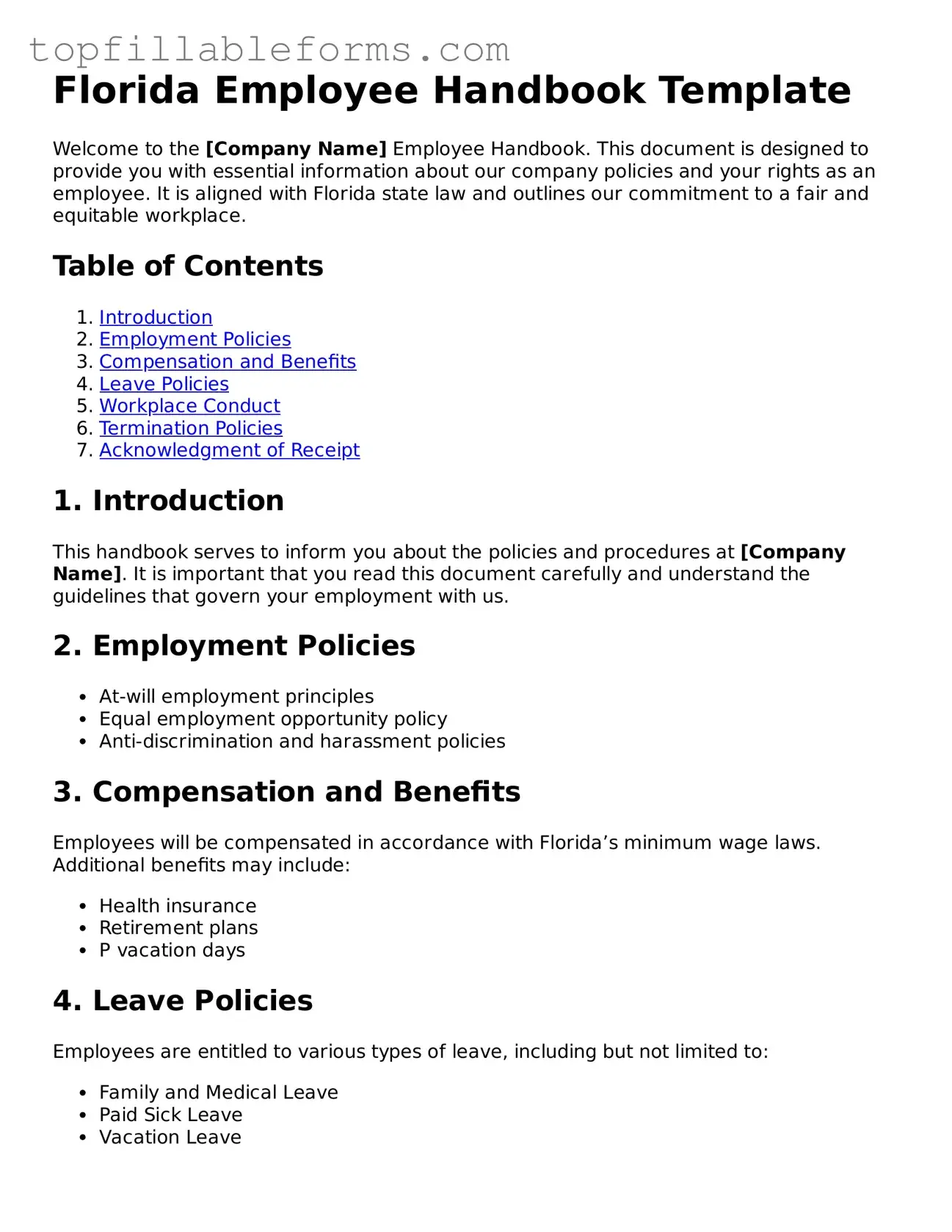Florida Employee Handbook Template
Welcome to the [Company Name] Employee Handbook. This document is designed to provide you with essential information about our company policies and your rights as an employee. It is aligned with Florida state law and outlines our commitment to a fair and equitable workplace.
Table of Contents
- Introduction
- Employment Policies
- Compensation and Benefits
- Leave Policies
- Workplace Conduct
- Termination Policies
- Acknowledgment of Receipt
1. Introduction
This handbook serves to inform you about the policies and procedures at [Company Name]. It is important that you read this document carefully and understand the guidelines that govern your employment with us.
2. Employment Policies
- At-will employment principles
- Equal employment opportunity policy
- Anti-discrimination and harassment policies
3. Compensation and Benefits
Employees will be compensated in accordance with Florida’s minimum wage laws. Additional benefits may include:
- Health insurance
- Retirement plans
- P vacation days
4. Leave Policies
Employees are entitled to various types of leave, including but not limited to:
- Family and Medical Leave
- Paid Sick Leave
- Vacation Leave
5. Workplace Conduct
Employees are expected to uphold a standard of conduct that reflects the values of [Company Name]. This includes:
- Respectful communication
- Professional appearance
- Adherence to safety protocols
6. Termination Policies
Termination procedures will align with Florida employment laws. Employees may resign or may be terminated under various circumstances outlined in this handbook.
7. Acknowledgment of Receipt
By signing below, you confirm that you have received and read the [Company Name] Employee Handbook.
Employee Name: ___________________________
Date: ___________________________
